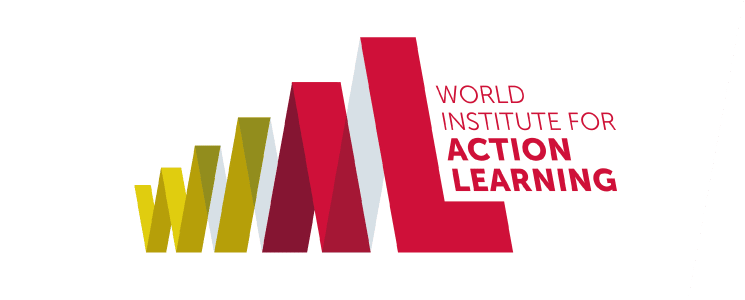Home team Twente puts direction with employee with Action
Learning

Thuisteam Twente is a care organization that has grown rapidly, necessitating a new way of working. To include employees in this change and to support them in taking their own direction, the care organization chose Action Learning. This methodology is already bearing its first fruits.
So ordinary that it doesn't stand out! With this motto in mind, the employees of Stichting Thuisteam Twente are there for people who find it difficult to keep their daily lives in order. Whether it is help with a chronic illness, old age, a mental and/or physical disability or psychiatry, Thuisteam Twente offers customized care and support.Without thinking in terms of target groups, together with the client and the informal caregivers, we look at what help is needed and how this can best be organized. Thuisteam Twente does a lot to avoid bureaucracy and to concentrate on what really matters: helping clients to live as independently as possible.
Thuisteam Twente has been working this way in Almelo and the surrounding area since 2007. With success, but the organization is growing rapidly and that requires a different way of working. "When I came here two years ago, there were 35 employees and now we are almost tapping sixty," says Manager of Care Eelco Wobben. "It has always been one big team, but now that the organization is growing, the group is getting too big. Then you just need a different arrangement. This is also the need of the employees who ask for this for various reasons."
The control with the employee
Control by the employee The steps that Thuisteam Twente is taking towards the future are intended to lead to a self-managing organization. The client's wishes will remain in the first place, but within the organization the control must be in the hands of the employee. Eelco Wobben: "What we find important is that employees themselves take the initiative to develop. As an organization, we want to facilitate the employees. At the moment we see that some of them are eager to do so, while others are very focused on their caseload and find it difficult to take the initiative. But if you want to change as an organization, you have to take everyone with you and motivate them in that change."
To enable change, Thuisteam Twente enlisted the help of intervention partner WIAL Netherlands with a grant. The World Institute for Action Learning teaches companies and institutions how to work based on the Action Learning methodology.
Action Learning is a process in which a small group works on real problems, takes action and learns as individuals, as a team and as an organization. Frank Campman, co-owner of WIAL Netherlands and facilitator of Home Team Twente, explains the purpose of the sessions. "With Action Learning, team members work simultaneously on improving cooperation, the team process, team behavior, discovering the real problem behind the symptoms and discovering relevant and new solution directions." As WIAL Netherlands does with other healthcare organizations around the country, employees are given various tools to properly have the conversation. This means creating a safe atmosphere during a meeting in which everyone can speak up and be heard. All team members dare to speak up, ask questions and give feedback. The word 'judgment-free' is central to this.
It is important when introducing Action Learning that the new way of working is not forgotten when WIAL's involvement is over. To prevent this, two home team Twente employees have been trained by WIAL Netherlands. They continue to guide the teams during their sessions and secure this methodology within the organization.
Action Learning in Practice
In early 2023, Thuisteam Twente took its first steps toward Action Learning, a methodology that Eelco Wobben says has many advantages. "We want to become a self-managing organization and for that you need self-managing employees. With Action Learning we want to collectively solve the dilemmas we experience within our work. Action Learning is then a great methodology to have a good conversation with each other, to let the undercurrent and the upper current communicate with each other."
What a session according to the Action Learning method looks like in practice becomes clear when we are allowed to watch a session in Almelo. This group of a dozen or so employees has already met three times and on the whiteboard is now articulating a problem for which a solution is being worked on. 'The problem is that the impact of the lack of an adequate, two-way exchange of information with those involved within Thuisteam Twente before, during and after decision-making or actions is not properly assessed, possibly creating new problems.'
Although the problem statement is clear, the road to it took some time. Iris Koning, itinerant supervisor, takes us through the process leading up to it. "In the first two sessions, the focus was still mainly on communication from us to our supervisor and from the supervisor to us. Eventually we started to see it more organization-wide. It's actually also about mutual communication with colleagues or teams. The problem is not only the distance between the supervisor and the employees, but within the organization a lot can be gained by trying to get clear in advance what the consequences of an action could be. We haven't come to the solution yet, but the Action Learning sessions did deliver something. They were necessary to learn more about the process."
Advantages
Although ultimately a problem is being addressed, how this is done with Action Learning is at least as important. After all, Action Learning should lead to good communication between team members. Gerwin Bosch, ambulatory supervisor, has already experienced this during the sessions. "It is a great tool to reach insight. By asking the right questions, you arrive at a clear problem definition. From there you can move forward. It lays a foundation."
By tackling a problem based on Action Learning, session participants see the various benefits.
Eelco Wobben: "I feel that you do several things. You address the problem and you also learn to ask the right questions.
At the content level, but also at the relationship level, you learn to communicate better with each other."
Eelco Wobben
"What I love about the method is that you kind of level the playing field for everyone. In a meeting, often the person who has the quickest idea or often has the highest word is heard, but with this method, you're very much challenged to only talk when you're asked something. So you can't just throw your own opinion on the table. because you're very dependent on your peers."
Iris King
"I especially like the non-judgmental nature of the issues. That does keep you on your toes because often you want to put an opinion or judgment into something very quickly. I find that it works very well to not do this anymore."
Gerwin Bosch
"Everyone participates, no one can hide and everyone is advanced. Every person matters and participates, there is no room to hide, and everyone is expected to participate."
Eelco Wobben
"You are aware that you are interpreting. That has to do with what's in your backpack, of course, but it colors your questions."
Eelco Wobben
"It's not just about the questions, it's also the dialogue that gets started. You provoke that by starting to ask different questions. That's important, because then you connect with your client, or with your colleague. That connection is just incredibly important.
Gerwin Bosch
The employees of Thuisteam Twente who attended WIAL's sessions see how Action Learning fits within their organization. "It's funny to see that it's not just about cooperation between colleagues, but that this skill continues in our approach to the client," says Iris Koning. "With that, it ties in with the Krachtwerk methodology that we want to propagate within Thuisteam Twente, where you really only start from what the client desires within certain possibilities. We really put full focus in asking 'what can we do for you?"
Now that the first steps on the road to the future according to the Action Learning method have been taken, its influence within the organization is already becoming somewhat visible. Eelco Wobben: "Yes, there will be discussions, and sometimes fuss, but you need that to start talking to each other. Things are now becoming somewhat more visible and not just in one place within the organization. Everyone also feels the freedom to do something with it and the employees are increasingly taking charge themselves. That change takes time, but there is definitely development in it."
